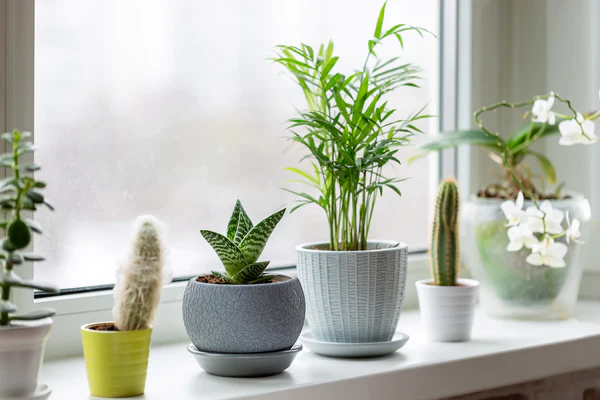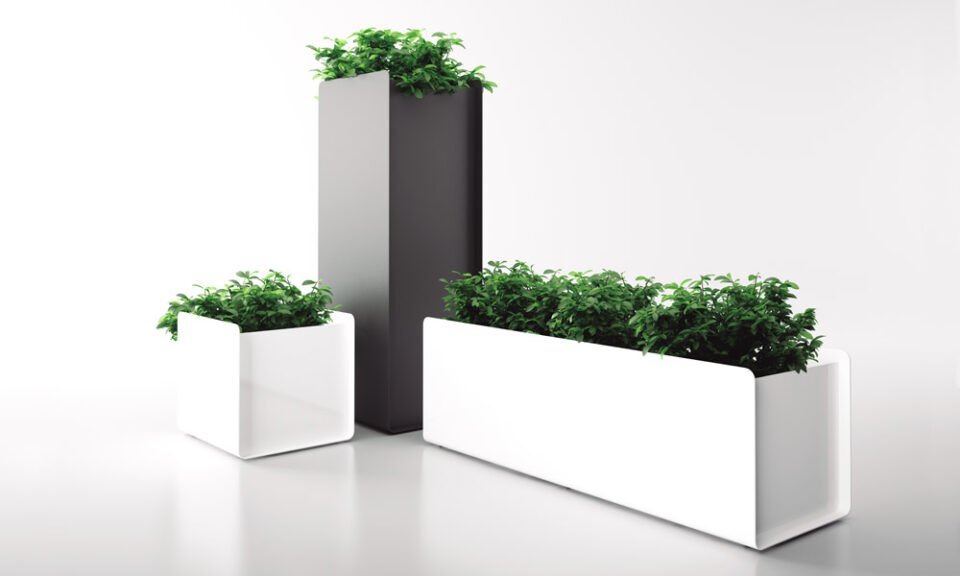The container you choose for your plants will determine their growth and health. The container you choose will make a big difference in your plants’ development, regardless of whether you are an experienced gardener or just getting started. We’ll cover everything you need to know as a novice to pick the right plant container to ensure your plants thrive.
-
Consider The Size Of Your Plant
Size is one of the most important factors when selecting a pot for plants. The container’s size is important to the growth of your plants. Too small a container can hinder root growth, and an overly large pot could cause water retention problems.
A smaller container is often sufficient for smaller or shallow-rooted plants like herbs and succulents. Larger plants, such as shrubs or trees, require a larger pot. If you choose a container, consider how big your plant will eventually grow and select one with enough space to allow the roots to spread. Choosing a plant pot about 1-2″ larger in diameter is best.

-
Material Subjects
Plant containers come with a wide variety of materials. They all have their distinct characteristics. Some of the more popular materials include
- Terracotta: This clay pot is a classic and known for its earthy aesthetic. Terracotta containers are porous, allowing for better moisture control and air circulation. They are ideal for plants that like dryer soil, such as cacti or succulents.
- Plastic: Plastic containers are light and versatile. They can be used indoors or outdoors, and they are great for plants that need to be hydrated constantly. Plastic containers are also available in various colours and styles to suit your decor.
- Ceramic: These glazed pots have a stylish look and are also functional. Ceramic containers retain moisture well, as they are nonporous. Therefore, they are ideal for plants that prefer moist soil. Additionally, they provide more stability to larger plants.
- Wood: These wooden containers provide a rustic natural look and are perfect for outdoor gardening. They offer excellent insulation that keeps roots cooler in summer or warmer in winter. You can protect the container from rot using treated wood or lining the interior.
Each material has advantages. It all depends on the type of plants you’re growing and the overall look you want.
-
Drainage Is The Key
No matter the container, proper drainage is crucial. Proper drainage is essential to prevent root rot. Most plant containers are pre-drilled with drainage holes. However, if your favourite container does not have any, you can easily add them.
If you’re using decorative pots or containers without drainage, like decorative pots, consider placing a plastic nursery container with drainage slots inside the outer decorative vessel. Double potting allows the excess water to drain away from your roots.
-
Think About Portability
Consider portability if you plan on moving your plants frequently. Lightweight materials, such as fibreglass or plastic, are easier to move around. Heavy materials like ceramic, concrete, and terracotta might be more durable but also difficult to move.
Consider the climate and sunlight if you plan to grow plants outdoors. It’s important to consider the weather and sunlight when choosing outdoor plants.
-
The Container And Your Plant’s Aesthetic Needs
Plants benefit not only from the right environment but also from an attractive container that enhances their beauty. Choosing the right colour or texture for the container can enhance the visual appeal of a plant display.
A simple, sleek container enhances the natural elegance of your plant. On the other hand, brightly coloured and bold containers add personality to smaller or more compact plants. If you want to create a cohesive style in your home or yard, match your container design to the overall decor.
-
Self-Watering Canisters For Low Maintenance
Self-watering pots can be an excellent option for those who forget to water their plants. These containers feature a built-in reservoir that gradually supplies moisture to roots. This reduces the risk of soil overwatering and under watering. Self-watering pots are useful for busy people or frequent travellers.
Conclusion
You don’t have to be overwhelmed when choosing the best plant container. By considering factors such as size, material, drainage system, portability, aesthetics, and aesthetics, you can find a perfect container for your plants and will enhance their growth. If you choose the right pot for your garden, it will be easy to create a healthy, flourishing garden, indoors or outside. Happy planting.

